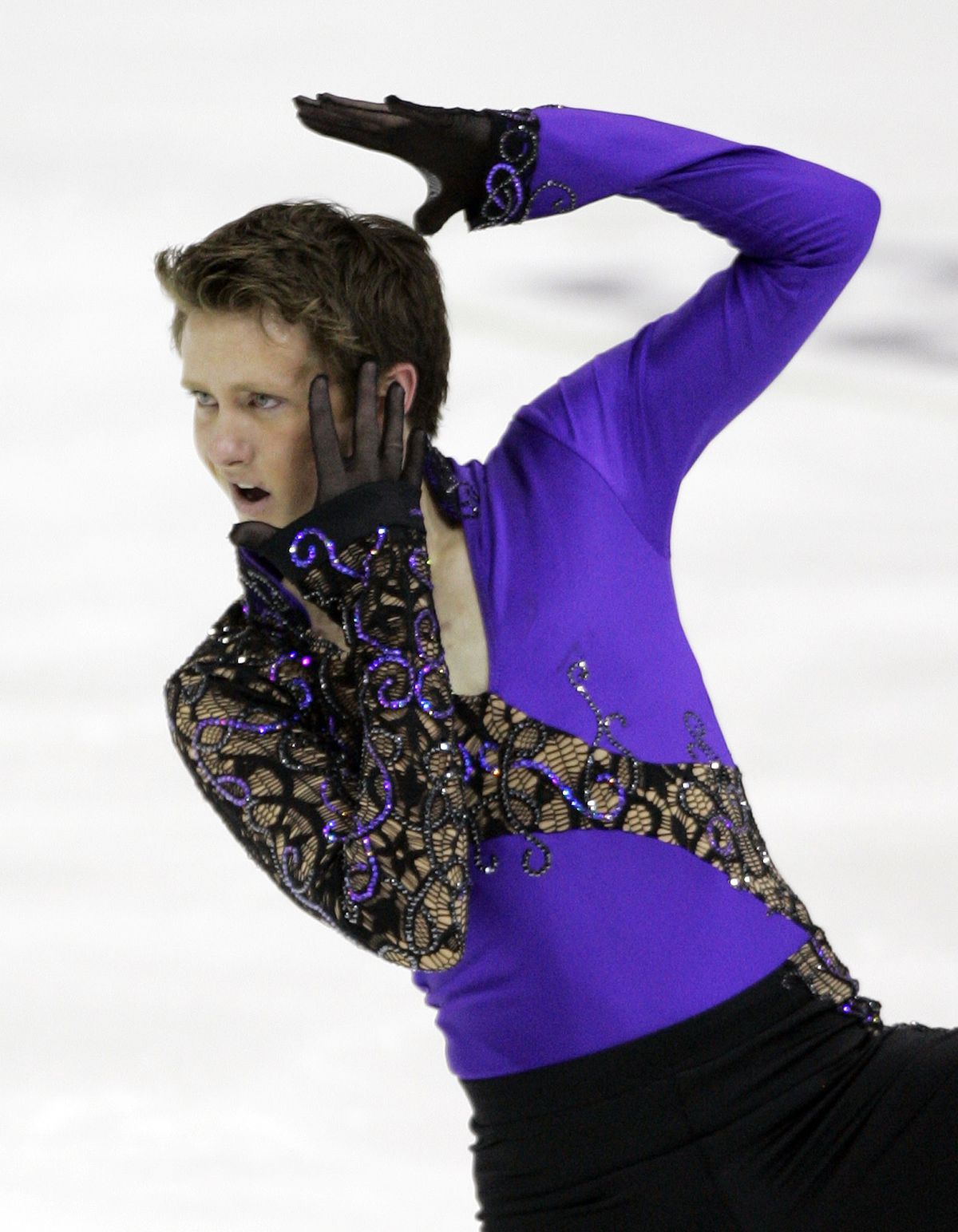Skaters under pressure
Nationals over, but worlds coming up

CLEVELAND – And the Americans thought there was pressure this week.
The Vancouver Olympics are still a year away, but they may as well be two months. That’s when the world figure skating championships will take place in Los Angeles, with results there determining how many skaters a country can send to Vancouver. Do well, and the Americans will have their usual small army. Do as poorly as they’ve done at the past few worlds, and the U.S. contingent will be about as big as Uzbekistan’s.
OK, that’s a bit harsh, but it could certainly wind up being as small as it was in 1994, the last time the Americans bottomed out at a pre-Olympics worlds. The United States sent only 12 skaters to Lillehammer: two women, two men, one dance team and three pairs.
Compare that with Turin, where the Americans had the maximum three in women’s, men’s and dance, and two pairs teams.
“Yes, I will feel a little bit of pressure to make sure we do have three spots at the Olympics, but I’m definitely not going to focus on that,” said reigning world junior champion Rachael Flatt, who earned her first trip to the big kids’ party with a second-place finish Saturday night.
“I’m going to focus on doing better programs than I did at nationals.”
Sending three U.S. women to the Olympics is as much a given as Austrians contending in the downhill. Only once in the past 85 years have the Americans sent just two – in 1994, when Nancy Kerrigan won the silver medal and Tonya Harding was eighth.
But Flatt and new national champion Alissa Czisny will have to finish with a combined placement of 13 (fifth and eighth, for example) or better to keep those three spots, and that’s going to be a stretch. The American women have gone back-to-back years without a medal at worlds, the first time that’s happened since 1993-94.
Czisny is a gorgeous skater, and she finally made the most of her considerable talent here after a career of inconsistency. But for as lovely as her spins, spirals and footwork were, jumps do still matter and Czisny landed only three clean triples in her free skate. That might cut it against Carolina Kostner, but it won’t against the likes of Mao Asada and Kim Yu-na – even with the hometown discount.
“This is a learning experience,” Czisny said. “I think I can take what I did at this competition, learn from it and use it to improve at worlds.”
Flatt’s programs are more technically ambitious. She has a triple-triple combination, and she does a triple-double-double combo late in her program that gives her big bonus points. But if she wants to wow the international judges, she’s got to show a little more life.
The men are in much better shape.
Jeremy Abbott is on quite the roll, adding the U.S. title to the crown he won at the Grand Prix final last month. Evan Lysacek may have dropped to third after winning the previous two U.S. titles, but he’s got plenty of street cred on the international scene with two bronze medals at the world championships.
Brandon Mroz is the newbie, finishing second in his first year at the senior level. But the youngster – he just turned 18 in December – was second at the junior Grand Prix final the past two years, and fourth at the junior world championships.
“Overall, we’re probably the strongest country in the entire world for men’s skating,” Lysacek said. “I would say that it’s looking really good for one of the U.S. team members to come in and win.”
Pairs champions Keauna McLaughlin and Rockne Brubaker have the potential to win, too – someday. But they’re still struggling to perfect their side-by-side elements.
“When comparing ourselves to international teams, it’s not just about hitting the elements every time. They look at the big picture and the entire performance,” Brubaker said. “If you look at the Grand Prixs, there’s really been one outstanding skate from a pair team.”
True. Germany’s Robin Szolkowy, the reigning world champion with Aliona Savchenko, can usually be counted on to botch at least one of their jumps, and the Chinese can be erratic. But there’s less room for error for a couple on the rise, as McLaughlin and Brubaker discovered when they just missed the Grand Prix final.
The second American team, Caydee Denney and Jeremy Barrett, is even less experienced, only resuming skating together again in June after a brief partnership two years ago. They’re that rare perfect match, gifted with the same timing and jumping styles that goes a long way in making a successful pair.
They still need polishing, though, and only time does that.
“Our ultimate goal is a year from now,” Barrett said. “As hard as we worked getting here, we’re only going to work harder next year.”
Hopes are higher in ice dance, where the United States has become a powerhouse in the discipline once dominated by Eastern Europeans. If Tanith Belbin and Ben Agosto are healthy – they missed nationals while he continues recovering from a back injury – there’s not one, but two couples who can be considered legitimate medal contenders.
Meryl Davis and Charlie White, the new national champions, were sixth at worlds last year and won the bronze medal at the Grand Prix final.
“Placement matters” at nationals, said Tom Zakrajsek, who coaches Abbott, Mroz and Flatt. “To me, worlds is no different. They want the best placement possible, they want the most points possible. … If they do their job, I’m sure there will be no problem.”